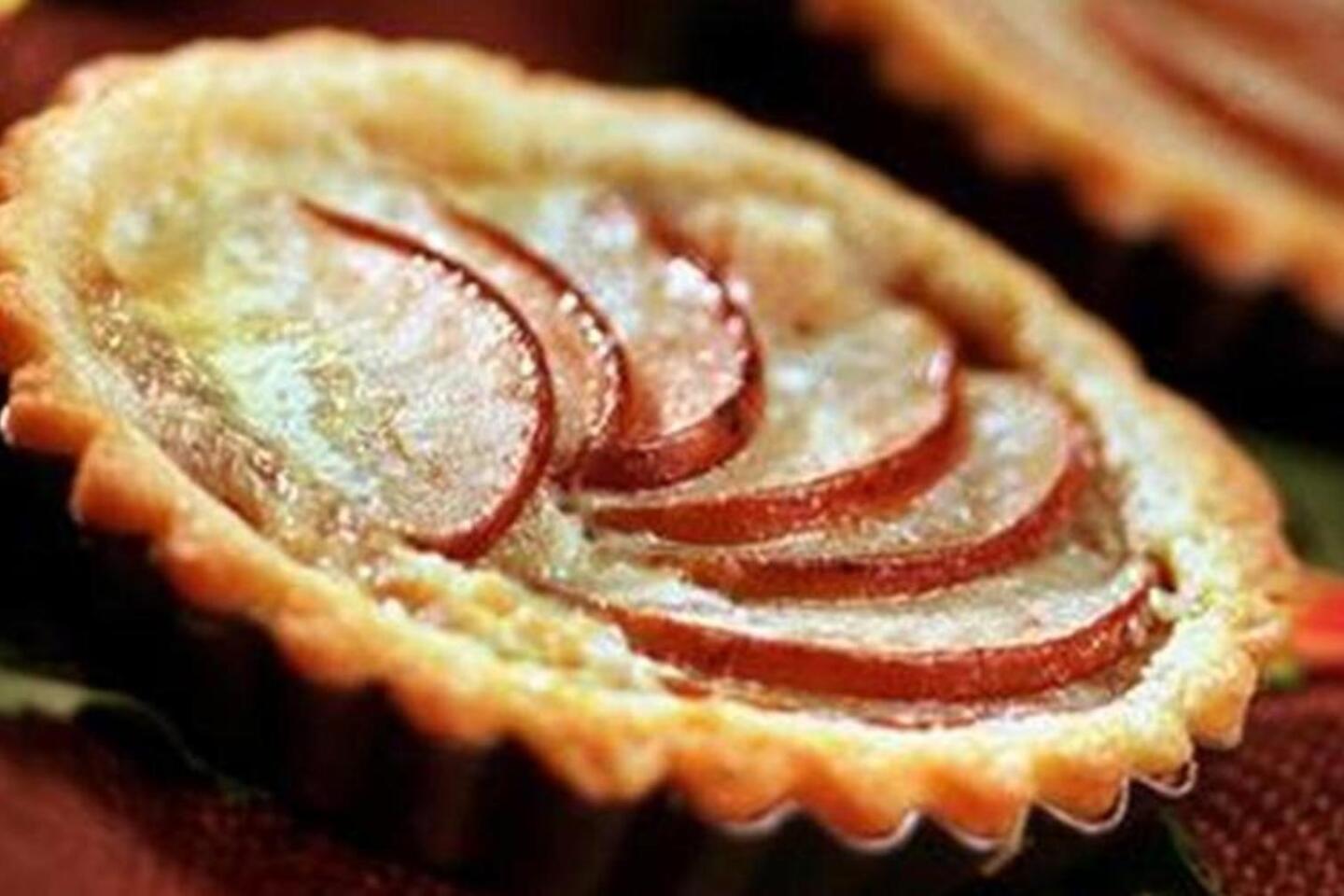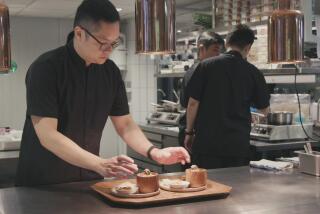Breaking the code on Asian pears, with 7 recipes
- Share via
You still won’t see them all that often at your corner grocery, but at farmers markets, Asian pears have become very popular. Choose the right farmer and you might find as many as nine or 10 different varieties.
They start being harvested in late August, but they’re really coming into prime season now. Some late-season favorites include: Shinseiki, which has a very crisp texture and a flavor like honey, walnuts and flowers; 20th Century, another crisp pear that tastes like a sparkling combination of apples and citrus; Kosui, which has a vanilla undertone; and Chojuro, a buttery Japanese pear with a caramel sweetness.
Fruit expert David Karp particularly likes the Shinseiki, which he says has “a mild, sweet flavor and hard flesh. Brighter yellow Shinseikis are sweeter than pale or greenish fruits, which can be bland.”
He also likes the popular russet-skinned Hosui (as opposed to Kosui), which he says is less firm than Shinseiki, but much more juicy, sweet and aromatic — “a candy bar compared with a cool drink of water”
He also advises that “the skin of Hosui and most other brown varieties is edible in theory, but thick and tough, so these fruits are best eaten peeled.”
How to choose: Asian pears may feel hard as rocks, but they actually bruise quite easily. Russet varieties should be deep golden brown; smooth-skinned round fruit should be yellow, not green, and smooth-skinned pear-shaped fruit will be pale green.
How to store: Asian pears need to be refrigerated.
Are you a food geek? Follow me on Twitter @russ_parsons1
More to Read
Eat your way across L.A.
Get our weekly Tasting Notes newsletter for reviews, news and more.
You may occasionally receive promotional content from the Los Angeles Times.













